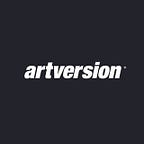User Pathways and Flow for Conversion: How Guiding the User Increases Retention
Digital designers are always looking to design with the target audience in mind. The goal of any digital product is to keep the user engaged long enough for them to reach their final destination. Through the use of user pathways and flow, a designer can guide the user through the product with ease — leading to satisfied users who are more likely to return.
What are User Pathways?
A user pathway outlines the way a user navigates their route through a digital product with the overall goal of completing an action. The user pathways are defined by the designer and tested before the product goes live. To create user pathways that are easy to follow and understand, a designer has a variety of items to take into consideration. Opportunities for engagement need to be clearly defined for the user. It is imperative to understand how and where a user can engage, and what they are getting out of the interaction. Whatever makes the interaction valuable to the user should be highlighted in the digital product.
When designing, knowing your audience is an important place to start. This can be done through the use of personas. Personas are fictional characters created by the designer that represent potential digital product users. The personas guide the designer on the variety of pathways different users might take when navigating the product. If the digital product is a website or app, when designing the sitemap, a roadmap for users can be created as well to ensure all important pathways are accounted for.
Valuable Content and Cues
Users typically want to reach their end goal as quickly as possible. This means any information that is not valuable to them could hinder their experience. It is critical that all information included in the digital product has meaning. It can also be helpful to give users something in return for their time. For example, on an e-commerce website, a company might give a user free shipping if they provide their email and phone number.
To help users reach their goals, designers can provide cues for them to follow, as such, for example, providing a call-to-action button to allow users to find their goal on a homepage rather than going through every page of the design.
Guiding a User with a Seamless Flow
Flow guides a user through a digital product through text, graphics, moving images and sound. Good flow keeps a user returning while bad flow reduces user retention. The goal for digital products is to make everything the user does feel natural. There are a handful of ways to give users this feeling.
Beginning with an attention-grabbing image holds the user on the beginning page. This can help deter them from clicking off immediately. From there, a designer can use arrows to guide the user to where they should go next. The final destination should once again grab the users attention through images, color, or typography. A strong visual hierarchy can also provide a smooth flow for users. By making the most important information stand out through font size, typography, color, etc. the user is drawn to what is most important first.
Why User Journeys Matter
All digital products are designed for their users, so keeping them in mind through the process creates optimal user experiences. A happy user is more likely to return and tell others about the product which in turn can improve conversion. Negative interactions stick more than positive ones, so getting it right the first time makes a difference down the road.
